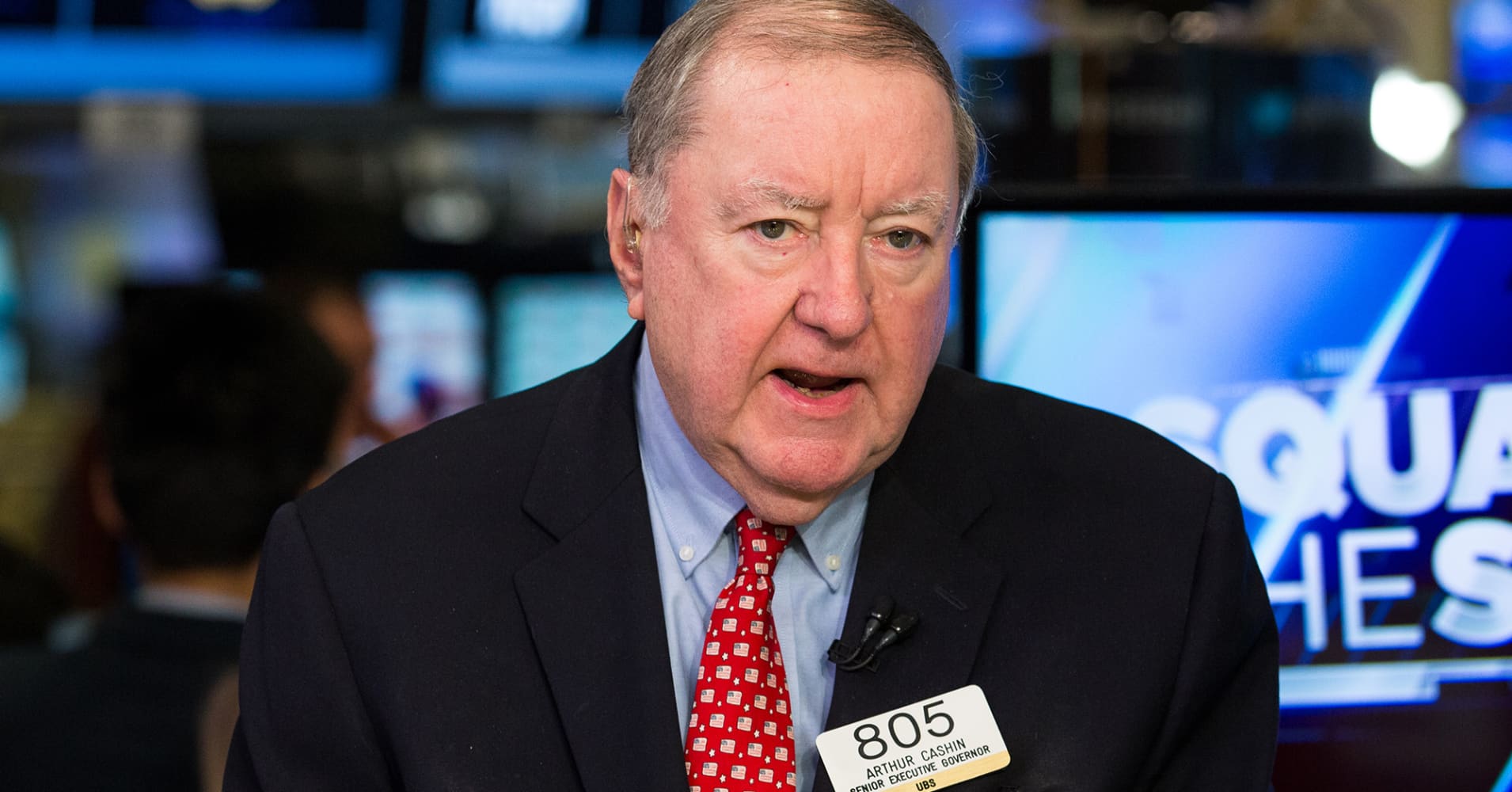
U.S. stocks plunged Wednesday but veteran trader Art Cashin said he didn’t witness any panic on the trading floor.
In fact, he thinks the selling was mostly based on technicals, along with some concerns about China and “not so hot” Treasury auctions this week.
“It’s not a stampede. It is a bit of a cascade because they keep breaking levels and that brings in selling,” the UBS director of floor operations at the New York Stock Exchange said on “Closing Bell.”
Instead, it was organized selling.
“If everybody was panicking it would look much more like a cattle stampede and the volume would be much higher than this, said Cashin, who began his career at Thomson McKinnon in 1959. In 1964, at age 23, he became a member of the NYSE and a partner in P.R. Herzig & Co.
The Dow Jones Industrial Average dropped 608 points on Wednesday, erasing all of its gains for 2018. The S&P 500 fell 3.1 percent and also turned negative for the year. The Nasdaq Composite closed 4.4 percent lower, entering correction territory.
“When you break a level, sometimes they have algorithms say ‘Uh-oh, that’s a sign of danger. Sell some more.’ You’re getting some of that today,” Cashin noted.
Sam Stovall, chief investment officer at CFRA, also said the primary driver of the sell-off was investors looking at the price action instead of the fundamentals, which are calling for good economic growth in 2019.
Therefore, he’d let the market find its footing. That’s because history shows shows that this decline could be deeper than the one earlier in the year, Stovall said.
“We’ve had several times in history in which we’ve had two 5-plus percent declines in the same year and typically the second decline ends up being deeper than the first one because we didn’t reset the dials enough the first time around,” he told “Closing Bell.”
Therefore, he believes the S&P 500 could drop down to the 2,580 or 2,600 level. The index closed at 2,656.10 on Wednesday.
“Then typically those that were worst become first. Those that were beaten the most tend to then rally off of that bottom the quickest,” Stovall said.
— CNBC’s Fred Imbert contributed to this report.
Be the first to comment